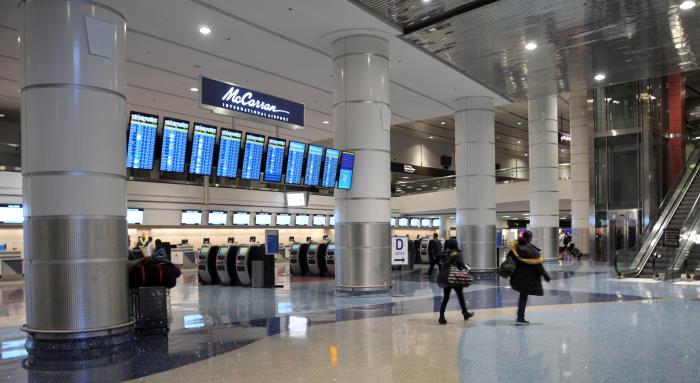The Transportation Security Administration (TSA) and the Department of Homeland Security (DHS) Science and Technology Directorate (S&T) have unveiled a prototype checkpoint technology, a self-service screening system, at Harry Reid International Airport (LAS) in Las Vegas.
Testing begins mid-March, with TSA PreCheck passengers at TSA's Innovation Checkpoint the first travellers to have the option to use the new system. The same rigorous screening standards and rules required of passengers using the TSA PreCheck lanes apply to the self-screening lane.
The technology was tested initially in a laboratory setting at the TSA Systems Integration Facility in Arlington, Virginia. The prototype has a video monitor that provides step-by-step instructions for passengers to complete screening at their own pace. Once passengers have completed the required screening process and are cleared for travel, automated exit doors open so travellers can gather their belongings and head to their flights. While there is minimal assistance from Transportation Security Officers (TSO), TSOs will be available for assistance as needed.
TSOs will work to ensure TSA PreCheck passengers using the self-screening lane are following security protocols. The aim is to provide a near self-sufficient passenger screening process while enabling passengers to directly receive on-person alarm information and allow the passenger self-resolution of those alarms to reduce instances where a pat-down or secondary screening procedure would be necessary.
During the assessment in a live checkpoint environment, TSA will collect passenger feedback and data on the system's performance, design, cybersecurity, human factors and other variables to inform future design requirements and system development and to understand how passengers and TSOs interact with the system. The data collected will inform design, development, feasibility and viability decisions for future iterations.
“We are constantly looking at innovative ways to enhance the passenger experience, while also improving security,” said TSA administrator David Pekoske. “This self-service prototype allows our trusted travellers to complete the screening process at their own pace. Testing at the Innovation Checkpoint in Las Vegas gives us an opportunity to collect valuable user data and insights, and explore opportunities to apply parts of the prototype to other airport security checkpoints.”
In late 2021, S&T awarded contracts to three companies to develop self-screening concepts, prototypes and hardware. The self-service screening prototype at LAS is the first to succeed in laboratory testing. Others are still in development and will be tested soon in a laboratory for future consideration in operational assessments.
TSA and S&T will carefully study the results of this assessment before they announce a timeline for any future deployment of this prototype to other checkpoint lanes or at other airports.

